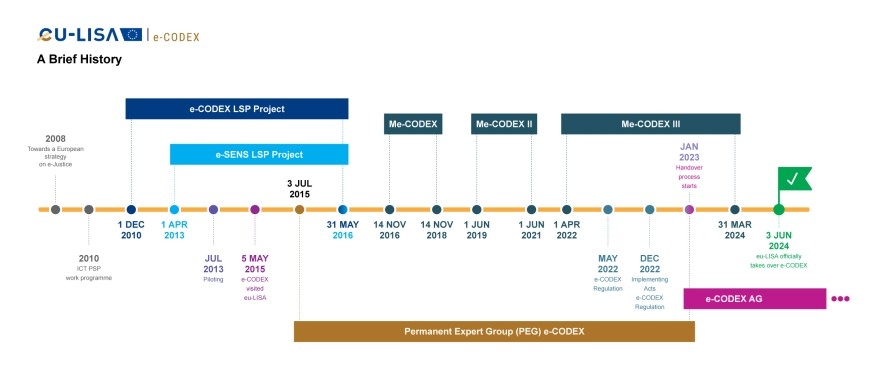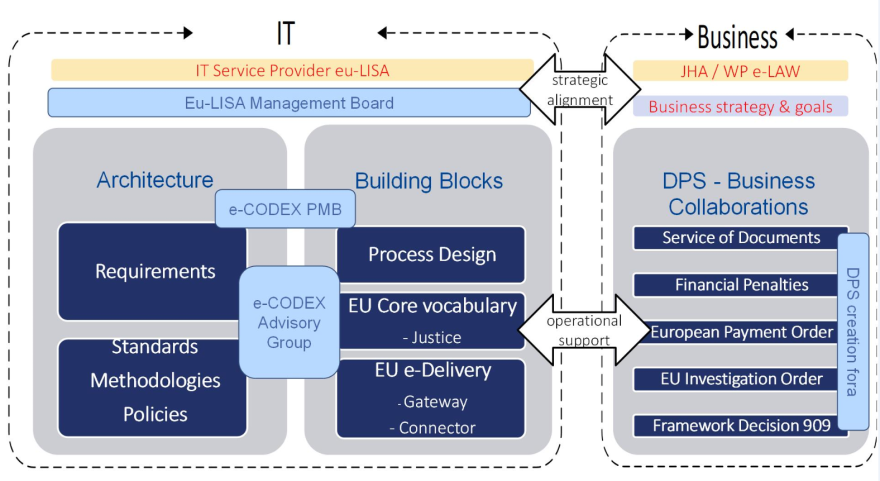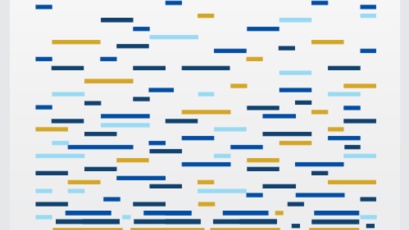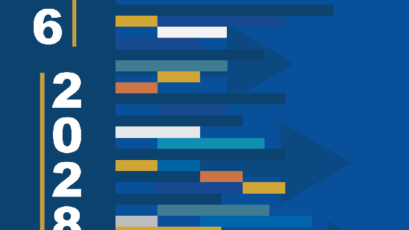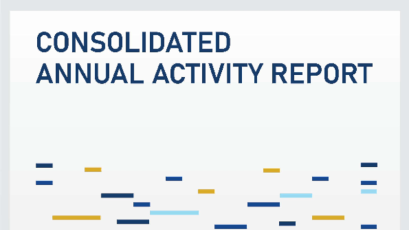Actions
In an increasingly digital society, with an estimated 10 million people in the EU involved in cross-border civil and criminal litigation and considering the complex variety of the different legal systems across EU Member States, simplifying and facilitating cross-border judicial cooperation is crucial to ensure the effective access of citizens and businesses to justice.
Creating a more just and secure Europe is one of the priorities of the European Commission and fundamental to achieving a true Single Market. Access to justice should not be discouraged by the complex variety of our different legal systems.
Interlinking existing domestic public services by exposing them to a cross-border dimension, e-CODEX enables and supports public administrations, legal practitioners and international organisations in the area of justice to do exactly that. By deploying the national judicial procedures and their supporting IT implementations in the context of established legal base at EU level, easy access to justice is enabled.
By adopting the European Interoperability Framework (EIF), e-CODEX fully respects the principles and strategic policies of the European Union. The goal of e-CODEX is to enable domestic public services in the area of justice to be exposed to a cross-border dimension. By doing so, European public services are created reusing the existing implementation of the collaborating partners and their digital autonomy is ensured. Only at common level, e-CODEX offers interoperability building blocks that:
- offer a European digital infrastructure for secure cross border communication in the field of justice;
- align domestic public services and data definitions at EU level;
- provide easy access to cross-border justice for citizens, business and legal professionals all over Europe;
- support the overcoming of legal boundaries, making Europeans feel safer and legally protected.
eu-LISA is responsible for the technical development and maintenance of e-CODEX, bug fixing, updates, support, the development of new features in those building blocks in order to respond to emerging requirements, as well as for the coordination of testing activities.
For more information, have a look at the e-CODEX YouTube Channel:
Brief history of e-CODEX
As a result of the EU Single Market, the need for collaboration between practitioners in the field of judicial cooperation grew exponentially. The Single Market created more cross-border trade, resulting in more cross-border trade disputes that needed to be legally solved, i.e., more cross-border marriages, cross-border employment, cross-border crime, etc.
Therefore, the justice domain needed to provide an answer by being able to digitally cooperate, respecting both EU and national legislative base. As the national legislative base would already be supported by IT systems based on national policies and IT frameworks, a centralised top-down approach was deemed unfeasible. The goal was achieving interoperability between distinct national legislation, procedures, data formats and network protocols.
Thus, e-CODEX started in 2010 as a Large-Scale Pilot (LSP) project designed by the e-CODEX Consortium under the Commission’s ‘Competitiveness and Innovation Programme’ to guarantee secure digital communication in cross-border judicial proceedings.
It aimed to improve access to justice across EU Member States by supporting secure and standardized electronic exchange of legal documents. During the course of the project, alignment with other EU LSPs was sought under e-SENS Project, handing over the e-CODEX Gateway to the Commission as a generic e-Delivery Gateway. As a result of the success of the e-CODEX project, it was decided to sustain its outcomes in a European body. Pending the creation of the legal basis, the project was maintained by the consortium under the Me-CODEX name.
With its implementation, e-CODEX became central to many EU Legal Instruments, which led to the adoption of the Regulation (EU) 2022/850 that mandated eu-LISA with the operational management of the system.
In January 2023, the handover process from the Consortium to eu-LISA started and was technically completed in December 2023. The handover was legally formalised with the Commission Implementing Decision (EU) 2024/1272 mandating the Agency to take over full operational responsibility over the system as of 3 June 2024.
From the e-CODEX Regulation to a Functional System
e-CODEX was built upon several principles:
- The Tallinn Declaration on e-Government: was signed on the 6 October 2017 by all the Member States and EFTA States to express their commitment to the modernisation of public administrations that will provide EU citizens and businesses with user-friendly, borderless digital public services.
- The European e-Justice Strategy: is a publication by the European Commission from 30 May 2008 aiming at facilitating access to information, e-communication in the field of justice and implementing interoperability (i.e., the ability of information communication technology systems and of the business processes to exchange data and to enable the sharing of information (European e-Justice Strategy and Action Plan 2019-2023). One of the main achievements of the European e-Justice Strategy is to facilitate access to justice by citizens and businesses across Europe and enhance judicial co-operation, on the basis of existing legal instruments.
- In order to interlink public service into cross-border business collaborations, the e-CODEX Regulation caters for the creation of Digital Procedural Standards (DPS). Such DPS describes the conduct of the cross-border procedure, complying with the respective legal instruments at EU level and taking into account the specifics of national implementation of these public services. Where the Business Collaboration design articulates the context, purpose and sequential steps of the procedure, the message structures define the exact content of each individual step in the information exchange. The message structures are based on a shared EU e-Justice Core Vocabulary, ensuring a consistent and sustainable structure and definition of semantic terms used across different DPSs. This enables the e-CODEX participants to easily reuse the mapping of EU Vocabulary to respective national vocabularies.
eu-LISA supports collaboration partners in defining the Digital Procedural Standards and will ensure both compliance with e-CODEX Regulation requirements and seamless integration of existing national public services. For each individual legal instrument, a tailored Digital Procedural Standard can be created. Once an initiative for the creation of a DPS is taken, practitioners of the entities involved in the actual day-to-day execution of the cross-border business collaboration will be invited to co-create the DPS. Please contact your representative in the eu-LISA e-CODEX governance bodies: the e-CODEX Advisory Group or the e-CODEX Programme Management Board, or contact E-CODEX [at] EULISA [dot] EUROPA [dot] EU (eu-LISA’s e-CODEX team) by email.
A quick overview of the e-CODEX instruments to build a functional system:
